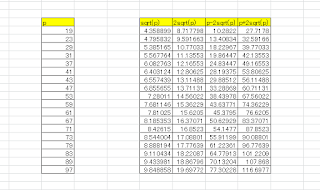p-2sqrt(p) < N < p+2sqrt(p)
p is prime, and sqrt is √
When p is 19, N is 19.
p=23 - N=23
p=29 - N=39
Carl Friedrich Gauss proved it. Moreover, p=N is Gaussian primes such as 19 and 23. This is Gaussian integers which are complex numbers. Elliptic curve is rational, so this is contradictory but prime is real. 5=(2+i)(2-i)
You can divide 5 in Z[i], so 5 isn't prime. However, 5 is prime in the real world.
This is Fermat's theorem on sums of two squares.
p≡1 (mod 4)
ex. 5,13=(2+3i)(2-3i),17=(1+4i)(1-4i),29=(2+5i)(2-5i)
When 3=αβ, this isn't also prime in Z[i].
N is the norm.
N(a+bi):=a^2+b^2=(a+bi)(a-bi)
N(αβ)=N(α)N(β)
3≠(a+bi)(a-bi)
Therefore, 3 is prime in Z[i].
4n+3 is Gaussian primes such as 3,7,11,19,23,31,43,47,59,67,71,79,83. This is in Y^2=X^3-X.
E(N)=G(p)≒4n+3≠(a+bi)(a-bi)
E(N) is the sum of the same modules in Y^2=X^3-X. G(p) is Gaussian primes.
You see COUNTIF(mod(y^2),mod(x^3-x)) which is p=N.



0 件のコメント:
コメントを投稿